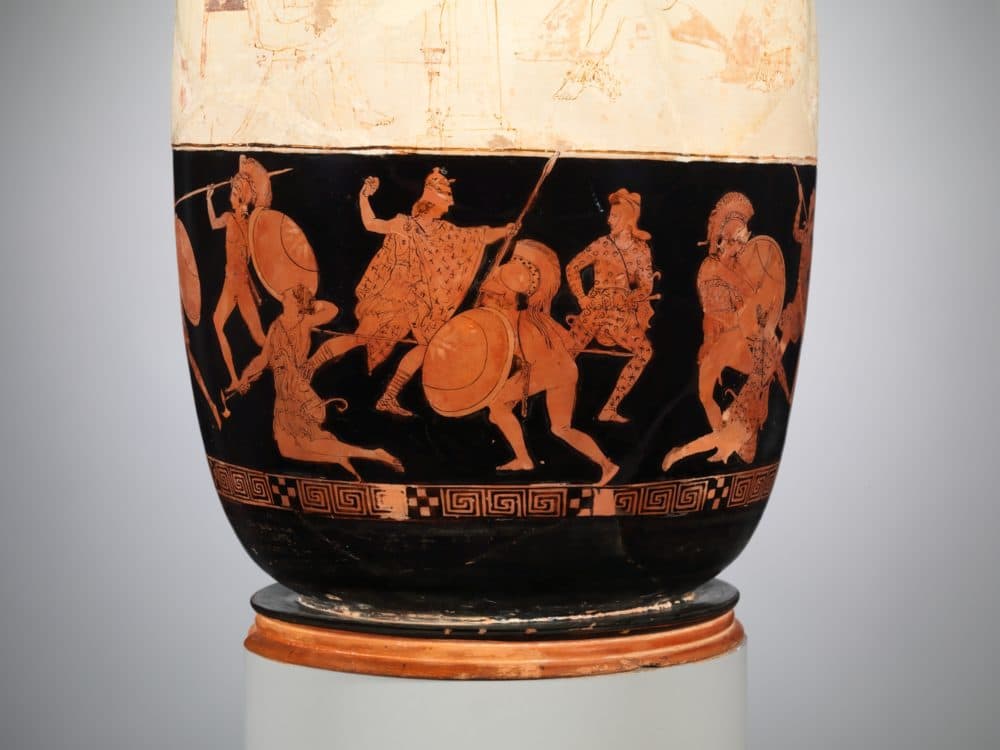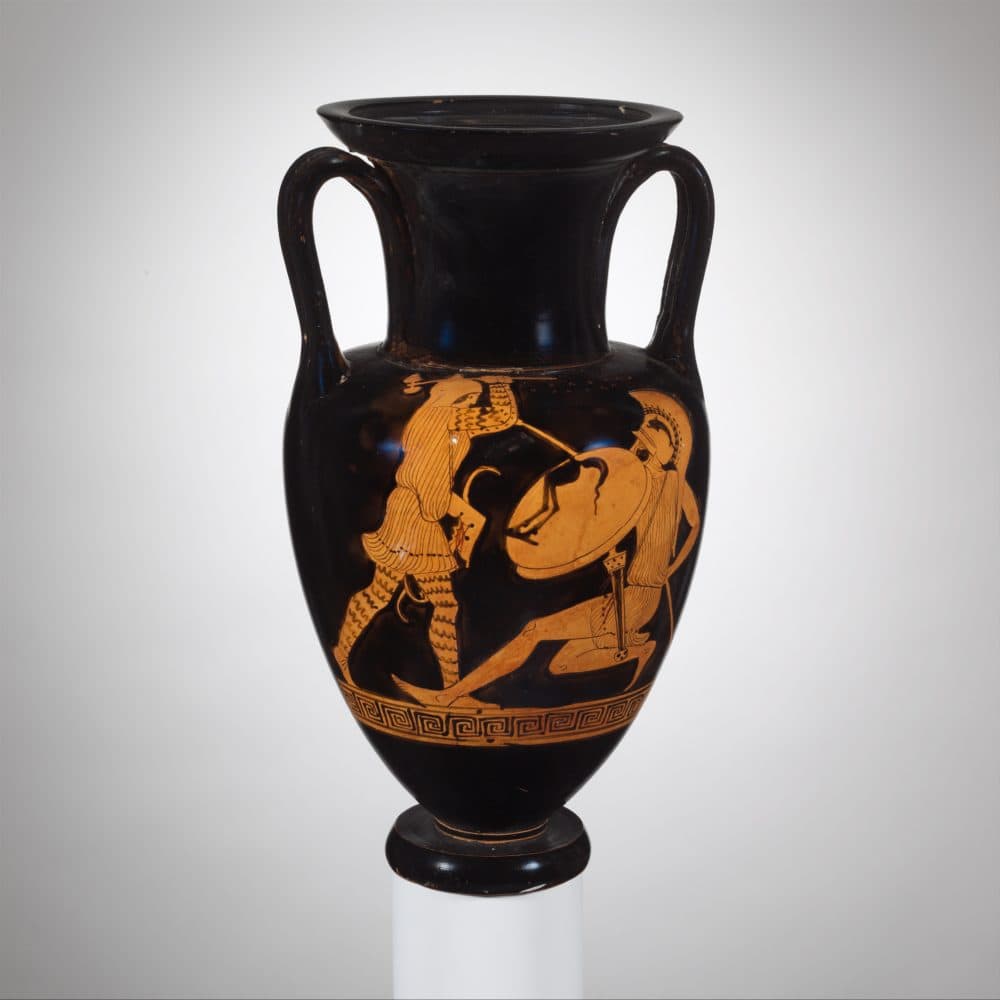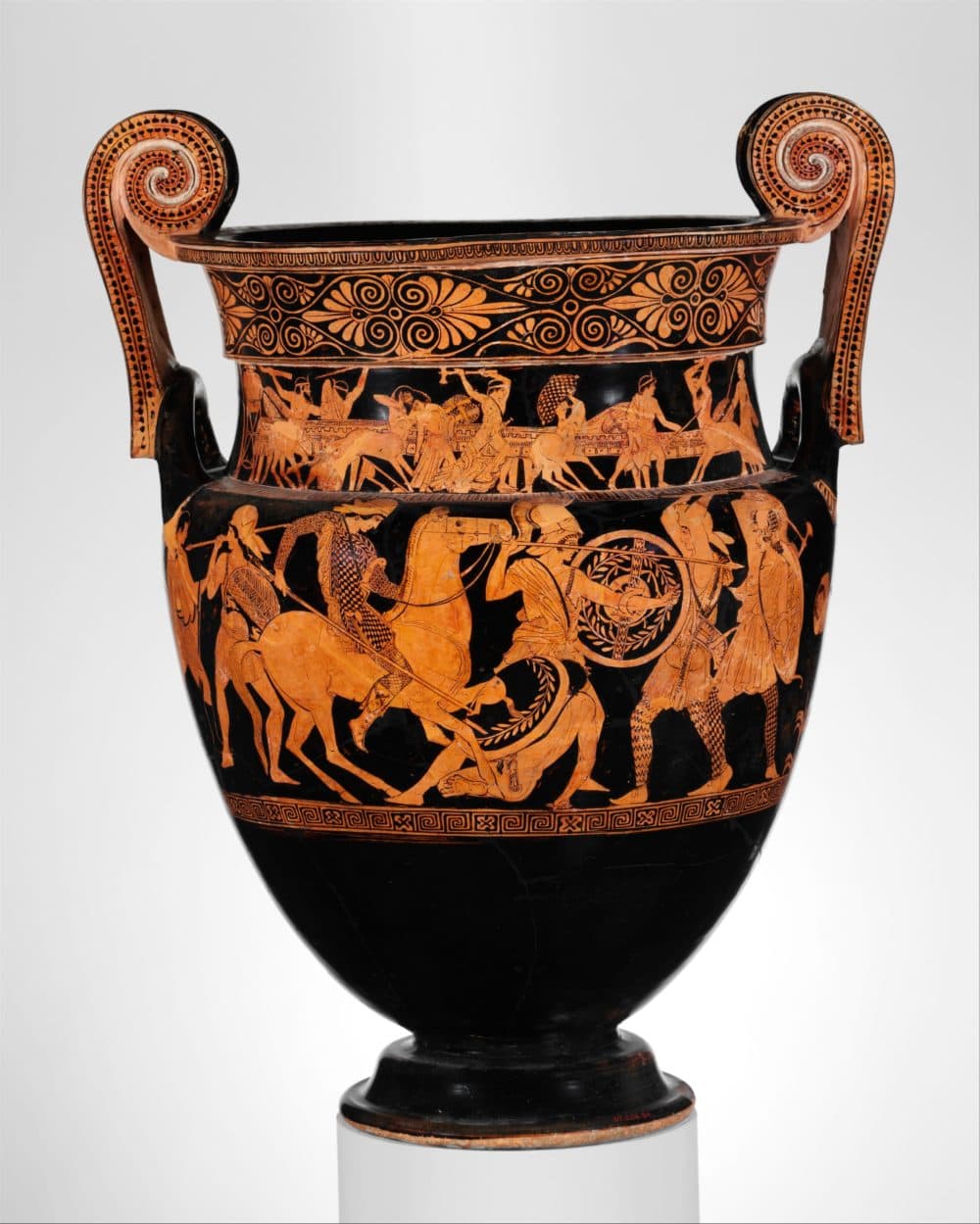Advertisement
New Russian Gravesite Proves Amazon Warrior Women Were Very Much Real
Resume
Editor's note: This segment was rebroadcast on Dec. 28, 2020. The audio is available here.
For centuries, scholars assumed that Greek myths about fierce warrior women they called Amazons were just that — myths.
But new archaeology confirms what modern historians like Adrienne Mayor from Stanford University had begun to suspect: Amazons were very much real, and they were actually Scythian nomads.
Earlier this month in Russia, archaeologists found the gravesites of four female warrior women — buried together along with their weapons. Mayor says it's the first time archaeologists have discovered remains of warrior women within a range of ages, from about 45 to 50 years old down to about 12 years old.
“These four women were companions in warfare, probably died in a skirmish and were buried together,” she says.
Notorious ancient Greek historians never doubted that Amazon women existed, she says, but modern historians and scholars haven’t been able to track down the myth’s origins and ultimately believed the warriors were products of the Greeks’ imagination.
Historians thought the Amazons mentioned in mythology were a variety of things: stand-ins for Persians, invented just to be slaughtered by Greek male warriors, or used to serve as propaganda to oppress Greek women, Mayor says.
“They thought of them as symbols of a sort of monstrous women because their lifestyle was the opposite of proper Greek female roles,” she says.
But the new discovery proves otherwise.
“I think all those are sort of questionable,” she says. “Now, of course, we have compelling evidence that real women living the lifestyle of Amazons in myth really existed.”

Interview Highlights
On the culture of Amazon women, who are thought to have been Scythian nomads 2,500 years ago
“They belong to tribes of nomads, of the steps. They roamed the vast territory of the region known in antiquity as Scythia. That was a land stretching from the Black Sea all the way east to Mongolia. The Chinese built the Great Wall of China to keep them out. So these were fierce warlike tribes. They were the first people to domesticate and then ride horses, and they perfected the invention of the recurve bow. So their lives centered on horses and archery. And they taught boys and girls how to ride and shoot from childhood so that everyone in the tribe could hunt and defend the tribe.”
On how the Greek mythology portrayed Amazon women
“Well, Homer did first describe them in his epic poem about the Trojan War, the ‘Iliad,’ that was written in about 750 to 650 B.C., and Homer called the Amazons 'the equals of men.' One ancient historian from Greece said that these tribes in Scythia were so savage that even the women went to war. So there were several ancient historians, such as Herodotus in the 5th century B.C. and then later Strabo and Plato ... They never doubted that Amazons really existed, and they related them to the real women of the nomadic tribes.
“But the myths, we don't know the origin of the myths. They were first written down by Homer. They were the mythic archenemies of the Greeks, the greatest heroes of myth — Pericles or Hercules, Theseus, Achilles. They all to prove their valor and skills in duels with Amazon queens. And remember all you can only win honor if you fight and defeat a really powerful and strong adversary. So Amazons fit that role. Theseus of Athens, he captured the Amazon Antiope, brought her back to Greece to be his bride, and then, according to myth, a huge Amazon army vowed revenge and they invaded Athens to rescue her. That monumental mythic battle against the Amazons was Athens’ proudest victory. They portrayed images of that hard-won victory everywhere in their city, in the Acropolis and on the shield of Athena. Amazons played a role in the legendary Trojan War. As we know, Penthesilea was the queen of the Amazons. She brought a band of female warriors to fight on the side of the Trojans, and she dueled with the Greek champion Achilles. He won, but in the myth he regretted killing such a brave and beautiful enemy. And there are vase paintings from the 5th century B.C. that show him killing her and then making eye contact and supposedly falling in love with the dying Amazon.”

On the myth that the Amazons were so dedicated to their warcraft that they would cut off one of their breasts to shoot their bows better
“That is a libel. It's a fake fact that has stuck like super glue for more than 2,500 years. If people think they know anything about Amazons, it's that supposed fact. That story first surfaced in about 490 B.C. A patriotic Greek historian attempted to force a Greek meaning on the word Amazon. Amazon is not a Greek word originally, and it was borrowed from some other ancient culture. We don't know which, but because it sounded a little bit like the word for breast — ‘mazos’ — and if you put an ‘A’ in front of it, it means 'without.' So they thought he suggested it meant 'without breast' and that demanded a story. So people said, ‘Well, maybe they cut off one breast so they could draw a bow, shoot arrows.’ And that's a physiologically silly idea.
“And in fact, it was rejected by other Greek writers in antiquity, and even more significantly, not one ancient artist ever bought that idea. All Amazons in Greek and Roman art are double-breasted, and anyone who practices archery knows that breasts are not a hindrance.”
On the fascination with Amazon women warriors, like those depicted in the "Wonder Woman" film
“Well, the ancient Greeks, they were fascinated because it was so different from their own mothers and wives and daughters. And the idea that women could be equals of men was sort of disturbing to them, but also attractive. They had very ambivalent feelings about it. I think many people do today still have ambivalent, mixed feelings about that. I kind of think for the ancient Greeks, the stories of those audacious Amazons that fought their biggest heroes, that sort of gave them a kind of safe place, an exciting way to imagine equality between the sexes in a sort of myth.
“I think today, the struggles to find balance and harmony between men and women, that's just universal, you can see it in Greece and Persia and Egypt and China and India in their stories of warrior women. And now the fact that we can read the myths and now know the realities about an egalitarian culture that not only gives us sort of romantic, thrilling stories about men and women who could be equals, but now we know that there was a kernel of truth underlying those stories. I think there's sort of always been Amazons in myths. Sometimes they're hidden, sometimes they're out in full view. But now the historical reality is coming to light and it's thanks to archaeological discoveries like the one reported this month.”
Cassady Rosenblum produced and edited this interview for broadcast with Todd Mundt. Serena McMahon adapted it for the web.
This segment aired on January 14, 2020.
